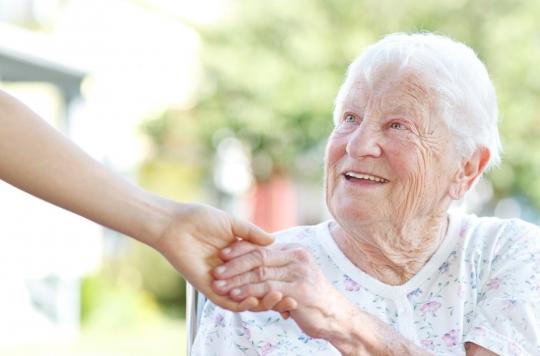Monocytes (5 to 10% of white blood cells) of older people do not produce as much energy and have more inflammation than those of young people.

- Monocytes (5-10% of white blood cells) produce less energy as you age
- This raises the level of inflammation and vascular calcification
- This work on monocytes is a way to try to slow down age-related changes
Throughout the world and especially in Europe, populations are living longer and longer. This is why several European countries, including Denmark and the Netherlands, have created specialized institutes and centers to solve the problems linked to the aging of society. In Estonia, by studying the differences between the immune systems of young and old people, researchers discovered that the monocytes (which represent about 5 to 10% of white blood cells) of the latter did not produce as much energy and showed more inflammation. Ultimately, the results of this study, recently published in the journal Aging CellImay help slow age-related changes.
For their research, researchers from the Institute of Biomedicine and Translational Medicine at the University of Tartu, together with colleagues from Tartu University Hospital and the Estonian Genome Center, focused on monocytes. Like all other white blood cells or leukocytes, these come from hematopoietic cells in the bone marrow. However, they have special properties that help them fight viruses and other pathogens. They evolve throughout life.
In the past, research had already made the link between aging and monocytes. “For example, they are known to be associated with inflammatory processes that occur in the body. A link between monocytes and vascular calcification or atherosclerosis (two diseases which are manifested by the appearance of plaques on the walls of the arteries)”explains in particular Pärt Peterson, professor of molecular immunology at the University of Tartu.
Increased intracellular inflammatory markers in the elderly
Armed with this information, the researchers here wanted to study what changes occur in young monocytes compared to the changes observed in those of the elderly. “We have discovered that the expression of many genes varies in monocytes from the elderly. The changes mainly occurred in genes related to protein synthesis and in the work of mitochondria, ie the powerhouses of cells. It can be said that the monocytes of older people do not seem to produce as much energy as the cells of younger people”notes Peterson.
Another interesting finding: the researchers observed an increase in intracellular markers of inflammation in the elderly, probably accompanied by a general increase in inflammation levels. They also noticed a higher proportion of certain lipids in the elderly. Thus, the accumulation of excessive lipid compounds in monocytes could be linked to the plaques that form on the walls of blood vessels, and therefore to atherosclerosis, suggests Peterson.
“Time will show us if we will be able to do anything to slow down the age-related changes. This study gives at least an idea of the direction we should take. As far as the future is concerned, it would be a great achievement if we were able to delay or even avoid the process of vascular calcification”, hopes the researcher. Either an appearance of plaques on the walls of the arteries due to a deposit of dead cells, cholesterol, fatty acids and lipids.
Worldwide, 125 million people are 80 or older.
According to WHO, in 2018, 125 million people were aged 80 or over worldwide. Most often, aging is accompanied by hearing loss, cataracts and refractive errors, low back and neck pain, osteoarthritis, chronic obstructive pulmonary disease, diabetes, depression or dementia ( Alzheimer in the vast majority of cases).
“Old age is also characterized by the onset of several complex health conditions that generally do not occur until late in life and do not constitute separate disease categories. This is commonly referred to as geriatric syndromes. These, which include frailty, urinary incontinence, falls, delirium and pressure sores, often result from several underlying factors”says the WHO.
Finally, even if certain differences observed in the health of the elderly are of a genetic nature, most of them are explained by the physical and social environment. Thus, maintaining a balanced diet, regular physical activity and avoiding tobacco and alcohol helps reduce the risk of many non-communicable diseases and improves physical and mental abilities at all ages. People’s characteristics (gender, ethnicity or socio-economic status, for example) also affect an individual’s aging process from childhood.
.
















